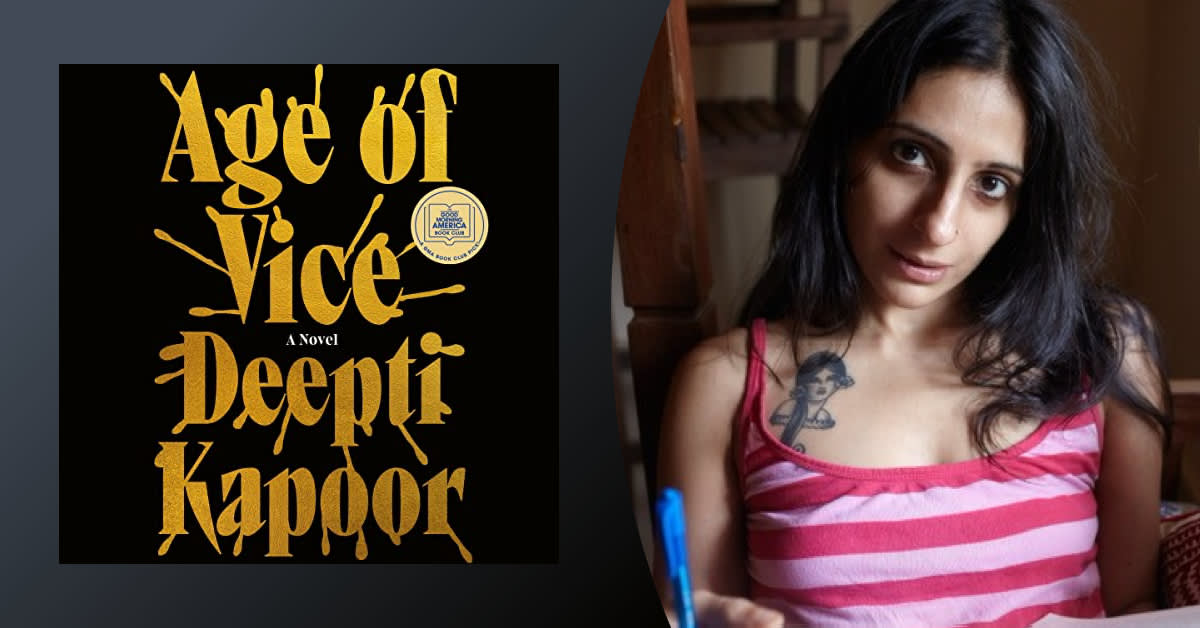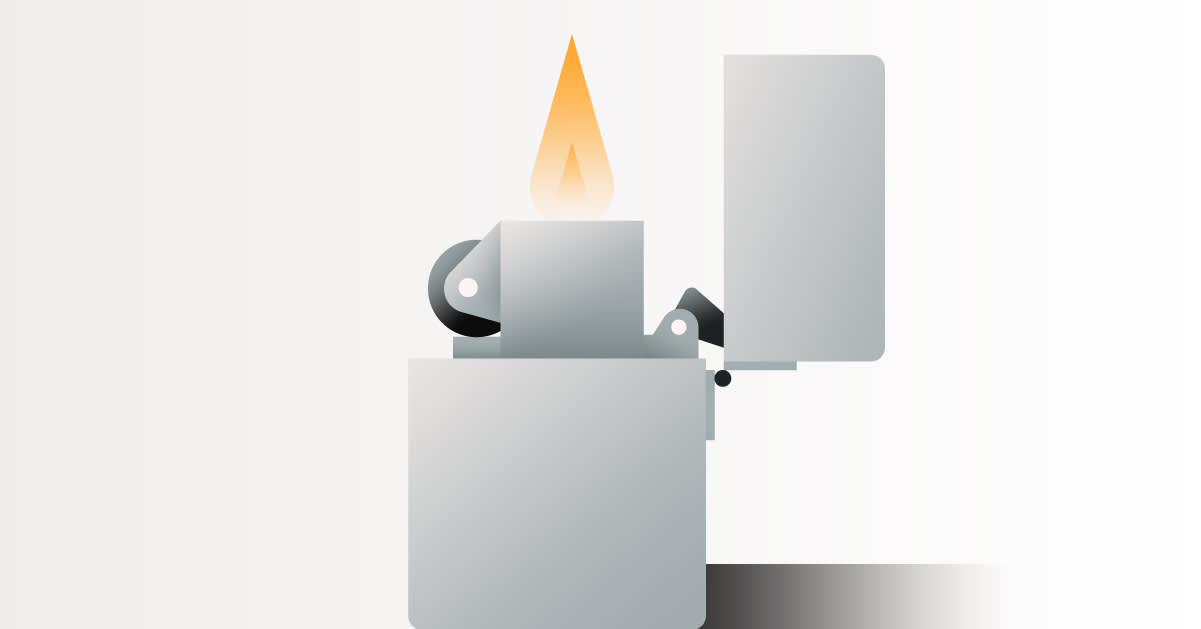Age of Vice is the first installment of Deepti Kapoor’s crime saga set in the streets of modern India. Narrated by performer Vidish Athavale, it follows the interconnected lives of three characters from Uttar Pradesh to New Delhi where love, family, and friendship are turned upside-down by corruption, wealth, and violence. Here, Kapoor talks about what sparked this “masala pressure-cooker novel" and gives some hints about what we can expect from her next.
Audible: Age of Vice has been described as a "masala potboiler." Do you think that’s a fitting term for Age of Vice?
Deepti Kapoor: I think I was the one who described it that way! Which means to say, one says a lot of things that come back to bite you later. So, masala potboiler ... Do I think it’s a fitting way to describe it? Maybe if I’m squinting. But probably not. Anyway, let’s define it first. We have to consider it in a similar way you’d think about the term spaghetti western—a western film made in Europe, primarily by Italians, with a European sensibility. And for me, we have an often-over-the-top, genre-fluid novel set in India with a sensibility that comes from so many different places. That’s the masala part. In India, masala movies were those great big three-hour movies that had a little bit of everything, a whole bunch of spices thrown in, to give something for every family member to take home—drama, romance, crime, comedy, action. So, yeah, I will go with that; I’ll take the term "masala."
Maybe the part I take exception to, which comes down to carelessness on my part, is the "potboiler" part. Potboilers sit cooking a long time. They also offer the kind of cheapest popular entertainment. You know what we do in India? We rarely let a pot boil. We don’t sit on them for hours on end, because we invented the pressure cooker. (Actually, it was the French physicist Denis Papin, in 1679, but don’t tell an Indian that.) We pressure-cook everything! You want an incredible goat curry in 30 minutes? Go see a South Asian.
So, I guess the novel is more like that, because it’s super-fast and intense and full of spices. So, let’s call it a "masala pressure-cooker novel" and leave it at that.
“I have a great affinity for screwed-up people in tough situations, doing what they think is best and damaging people along the way.”
The story spends most of the time in northern India, exploring a wide range of geographies such as farm lands, big cities, and small villages. As someone who was born in Uttar Pradesh, where most of the story’s plot takes place, how much comes from your own reflections and experiences?
Well, I grew up on stories of cops and gangsters. My grandfather was a police officer who was famous in his area for taking on bandits, until he died in a car chase. Then my widowed grandmother, who had been a housewife, went back to school and became a doctor, like her father. She was the superintendent of a government hospital in some pretty tough towns in Uttar Pradesh. We spent our summers with her, feasting on tales of goons and land mafias. She was often threatened for the prime land she had when she retired from government service and set up her own hospital. She had guns pointed in her face. But she was like a gangster herself, formidable, with the most withering stare and a tungsten will.
So that’s the baseline—the stories and myths of our own family, the world I was comfortable with. I have a great affinity for screwed-up people in tough situations, doing what they think is best and damaging people along the way. I feel like I’m on their side of the fence. As I grew older, especially after my own father died, I empathized with damaged people. My mother was widowed when I was in college, and since she couldn’t drive, she had a driver afterward, like so many middle-class families in Delhi. The Indian driver concept seems weird to non-Indians, but it’s literally like you have a car, and you find a guy in the neighborhood who is at a loose end or needs some work, and they drive your car for you, because it’s so tortuous to drive in Delhi.
In those days, I didn’t like to use a driver—I wanted to drive myself because the car was my primary freedom—but I liked to talk to the driver. Our first driver went to jail for his part in a gang-rape, then got involved in a prison beef and was slowly injured by being fed glass. The second driver was his cousin, and he was a good guy but clinically depressed, so we were both on Prozac for a while. The third driver, who was a bit of a local gangster himself, had a brother who went to jail for taking part in a murder. I always hid my own repulsion; I behaved like a therapist. Instead of judging and isolating myself, instead of segregating my existence, I talked to them, asked questions, tried to figure out what happened to their lives. I don’t think I would have been like this if my own father hadn’t died, and my boyfriend after that. These double deaths in my early 20s, which seemed our family’s curse, steeled me against pain but also opened me up to it. Make no mistake, what these people did was very wrong, but I wouldn’t flinch from it.
But to get back to the question, the short answer is: a lot. Most of the events or stories come from personal experience, or the stories and experiences of people around me, bulked up with news reports and research.
“Ajay was my bait-and-switch. You’d think you were getting the classic underdog hero’s journey, then you’d find yourself in the heart of this criminal business family in Delhi.”
While distinctly Indian, there is something universal about this story. What do you think it is that makes it appealing to a global audience?
You know, it’s really difficult for a writer to say what makes their book appealing—they’re usually more attuned to what makes it unappealing. Or at least, it’s difficult for me. Often you don’t know for sure, but the first thing I’d say is: Ajay!
I only realized once I was almost finished and sending it out to people what a character I’d created for non-Indians in Ajay, which is funny, because so many Indians are pretty much indifferent to Ajay. They feel he’s a character and a story that always gets told, which foreigners love to hear, which verges on poverty porn and "writing for the West." My intention with Ajay was never to focus on him like that, never to make the novel his story. Ajay was a way into the family, to the rest of the narrative. Ajay was my bait-and-switch. You’d think you were getting the classic underdog hero’s journey, then you’d find yourself in the heart of this criminal business family in Delhi and Ajay would become part of something else. But people really responded to Ajay. There is a universality in his journey—a universal appeal, let’s say. He’s the only truly "good" character in the whole thing, and he goes through the ringer. I actually intended to kill Ajay at first, since this is the age of vice. But I reached a point where I couldn’t. I also knew there was more of a story to tell.
Beyond that, I think there’s an understanding among many readers that what is happening in the novel can happen to us. A sense of “There but for the grace of God go I,” or even perhaps, “This smells familiar.” This kind of corruption, it can happen to you too, and it can happen anywhere. The erosion of democratic institutions to allow crony capitalism to flourish happens all around us, if we’re not vigilant, in the US, in the UK. So, maybe that’s a factor. Or maybe, it’s just because the characters are written with both specificity and universality of emotions.
Age of Vice is the first in a trilogy, and soon to be adapted for TV! What can we expect from the sequel and/or the rest of the series?
More Ajay on the road and the run, Neda returning to Delhi a chastened person, Sunny trying to be a better man—with a few years’ time jump ahead. I intended each novel to focus on an event or series of events that defined Delhi or North India. The first book was around the slum evictions in Delhi, which transformed the cityscape, and the real estate boom elsewhere. The next novel has another event in the next few years, but I’m not going to give that away just yet.





